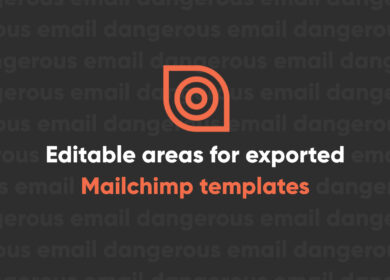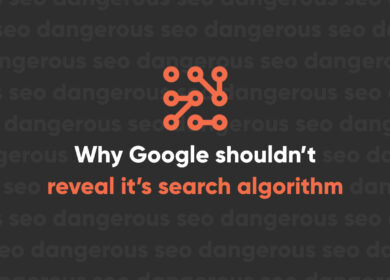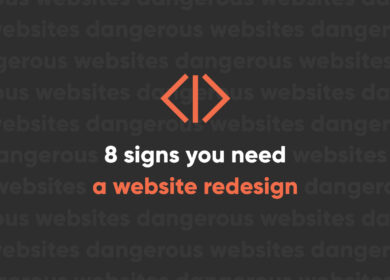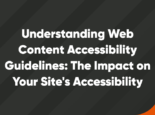
Guide to Creating a Digital Marketing Strategy for Manufacturers
The manufacturing industry has faced plenty of obstacles to business growth over the past few years. Recent legislation including the CHIPS Act, Inflation Reduction Act, and Infrastructure Investment and Jobs Act has helped reinvigorate industry spending and research, but there are still plenty of challenges that the industry is facing in 2024, like ongoing supply chain disruptions, labor shortages, sustainability demands, and economic uncertainties.
Through all of these obstacles, the need to bring in new business and grow profits remains the same. If you aren't operating with a strong digital marketing strategy in place, you're putting your business at a disadvantage and risking your marketing budget on random marketing activities. A B2B marketing strategy can unveil new opportunities for business growth and increased profitability, and by building a full-funnel, holistic digital marketing strategy, you can get in front of new audiences, build and maintain relationships with existing and previous customers, and create more ways for prospects to connect with you online before becoming customers.
If you're not taking advantage of all that digital marketing has to offer your manufacturing business, now is the time to start investing and competing in the digital space.
Is digital marketing a good investment for manufacturing companies?
Marketing is not only a smart investment, but a necessary one for manufacturing companies looking to grow revenue, stand out from competitors, and have lasting success. What worked in the past for bringing in business isn't working anymore, but digital marketing can help fill your manufacturing sales funnels. While referrals can still be an excellent way to drive business, digital marketing activities are instrumental in helping manufacturing companies connect with new and existing audiences to drive leads that turn into long-term business partners.
Digital marketing can also increase retention and attract top talent. By being more present online and building brand awareness, you're opening up new communication channels to share company initiatives, show off the work you're doing, and encourage employees to engage with you to grow your reach. It's truly a win-win.
With so many channels out there, you might find yourself lacking the resources to get started. And with new AI technologies, upcoming changes to data privacy regulations, and shifting trends, it can be difficult to keep up. In this guide, we'll help you work through the process of building a digital marketing strategy for your manufacturing company. We'll also discuss how to measure the results of your efforts so you can make data-informed decisions around your marketing efforts.
What makes a strong digital strategy?
There are so many factors that go into creating an effective digital marketing strategy for manufacturing companies. To cover all of your bases, we'll break it down from the very beginning before getting into the tactics you'll need to implement.
Determine brand messaging and differentiation
Before you do anything else, you should make sure that you've documented a consistent brand voice and messaging. When we build a website for a client, we do an exercise with stakeholders to document a well-thought-out brand messaging strategy that includes brand voice, user personas, taglines, brand story, and differentiators. If something like this doesn't currently exist for your business, your first step should be putting one together for your brand before moving forward. The last thing you'd want to do is spend time creating a digital marketing strategy that has inconsistent messaging and confuses your audience, and you need to get to the root of what makes your brand unique if you want to stand out from the competition.
Throughout this process, conduct market research to inform your messaging. Look into your competitors, uncover who is searching for your brand, figure out where your audience is spending time, learn how your audience prefers to be communicated with, etc. Knowing who you're planning on targeting is a huge part of any marketing strategy. You might think you already know your audience, but it's important to confirm you're targeting the right people.
Here are a few ways you can start collecting first-party data and researching your audience:
- Conducting customer surveys
- Tracking website analytics through GA4 or another analytics platform
- Searching keywords related to your brand and services on social media channels and on Google
- Analyzing forms that website users have filled out
- Online research through articles, blogs, and public forums like Reddit
- Utilize social listening tools like Cision or Sprout Social to understand user sentiments around your brand and services
From there you'll get a better understanding of which channels matter to your audience, how they want to be communicated with, and where there might be gaps in the industry that are leading them to look for a manufacturing partner. This will help set you up for success from a messaging standpoint but also in determining which marketing channels and activities you should prioritize.
Set clear KPIs and goals
Goalsetting is where you can dive into what you're trying to achieve online and how you're going to measure success. We would bet good money that your ultimate goal is to grow revenue for your business. But there are so many ways to do that, and you have to know how to measure the effectiveness of the activities you're implementing to understand what's working and what's not.
Figure out which key performance indicators (KPIs) are most important for your business, like the number of leads generated, the number of email newsletter subscribers gained, or the number of organic click-throughs to your website. Measure the marketing activities that matter most and set attainable goals. To accurately attribute your results to specific channels, you'll need an analytics tool like Google Analytics 4 set up – but more on that later.
You should also consider your budget at this time. How much are you willing to invest in your digital efforts? Remember that there are more investments than just money–you should also factor in other resources like people and time. But don't forget, you have to spend money to make money.
Identify the right channels
Now is the time to determine which channels you should focus on. Selecting the digital channels you're going to prioritize goes back to how much budget you have, where your audience is, and how you want to reach them, so make sure to refer to your research. But there are other factors that come into play for each channel, too. Let's take a look at the main channels you should consider implementing to market your business and services.
SEO
Search engine optimization (SEO) is an important part of marketing that helps you gain more visibility in search results pages. If your audience is searching for you on a search engine, you need to show up–or risk losing out to a competitor. SEO helps increase visibility, leading to more website traffic, and ultimately, more leads.
SEO is complicated, but at its core, it involves making changes to your website content to ensure that your web pages show at the top of the search engine results pages for relevant search queries.
The manufacturing space can be technical, so the search queries you focus on might be long-tail, like questions or longer search terms that include qualifiers to get more targeted answers. It all depends on how and what your audience is searching for to find you. You'll want to conduct keyword research using a tool like SEMrush (which has a free version) to get a better strategy down before focusing on activities like internal linking, keyword optimization, etc.
At first glance, you might think, "there isn't any search volume for manufacturing-related queries." But you just have to find the right queries to focus on. For instance, if you're a semiconductor manufacturing company, you could try focusing content around "are there any semiconductor manufacturers in USA," or "who makes semiconductors" to try and show up for informational queries that increase brand awareness for your business and drive more traffic to your site.
You could also focus your optimizations locally to ensure you're showing up in the state you're located in, making sure that if you're a US-based company, you're showing up when people are searching for location-specific manufacturers.
The manufacturing sales cycle can be a long game, so making sure you're showing up as an industry leader when people are looking for information about your services is crucial to staying top of mind. Then when a prospect is ready to select a manufacturing partner, they'll think of your business.
Another important part of SEO is prioritizing online reviews. Reviews can help your Google Business Profile show up higher in local listings and on Maps listings, so encourage your customers to leave you positive reviews. It's a great way to boost your search visibility while growing your credibility as a company.
It's also essential to consider generative engine optimization for any B2B marketing efforts. B2B buyers are turning to LLMs like ChatGPT and Perplexity more than ever, so it's essential to show up when your users are having these conversations.
Content marketing
Content marketing is crucial to a successful digital strategy, and it goes hand-in-hand with SEO. You'll want to create content for your website that aligns closely with your SEO research. For instance, if there's a question about manufacturing that's getting searched frequently, you can create a blog post that answers the question and provides deeper insights to drive relevant traffic to your site.
And while blog posts are probably the first thing that comes to mind when you think of content, there are countless types of content you could create. You'll want to make sure you're creating quality content for each stage of the customer journey so that you can effectively nurture your prospects and lead them to conversion. Here are just a few ideas for each stage:
Awareness:
- Blog posts
- Explainer videos
- White papers
- eBooks
- Webinars
- Hosted events
- Infographics
- Podcasts
Consideration:
- Reports
- Comparison guides
- One pagers with differentiators
- Sell sheets with services
- Testimonials
Decision:
- Consultations
- Demos
- Testimonials
- Case studies
Content can overlap between the stages, but the best way to categorize content by funnel stage is by ensuring the topic aligns with what your customer cares about at that time. Is the buyer looking for more information, do they have specific questions about your services that they want answered, or are they deciding between a few different options and want to better understand your differentiators?
Remember, B2B buyers make informed decisions based on data, but that doesn't mean your content should be dry. You're speaking to another human, so break down complex terms and processes, and consider using humor to connect with your audience.
Social media marketing
Social media is often a neglected channel for B2B businesses, but it's a free and effective way to connect with your audience.
There are so many different social media platforms to explore, so don't count it out as a tool for your business. That's not to say that your manufacturing business should go jump on TikTok, but if it aligns with your company and gives you an opportunity to connect with your audience, it's worth considering.
Typically, we recommend at least getting active on LinkedIn. It's a great platform for B2B businesses to share thought leadership content, case studies, testimonials, explainer videos, content about your employees, and more. Run your social media in tandem with your website content using new site content to inspire your social media posts.
LinkedIn is an excellent channel for building and maintaining relationships, fostering a positive digital culture, and sharing your company initiatives. We encourage businesses to explore other social media channels, too, but LinkedIn is a great place to start. Determine a posting cadence that works for you and start sharing content! Just remember to stick to your brand voice.
Email marketing
Email campaigns and newsletters are another good option for nurturing your audience and driving them to conversion. They're also a smart way to keep in touch with your current customers, ensuring that you're staying top-of-mind and acting transparently.
If you have a contact database or CRM, consider how you could segment your audience to send out strategic email campaigns. You could create a segment for Closed Lost proposals and reach out to them periodically to remind them of your presence. You could add new leads to a nurture cadence and feed them relevant, educational content to encourage them to convert. There are tons of different options that, depending on the amount of data you have, can be extremely helpful in nurturing your leads.
Email marketing is also a great way to keep in touch with your customers. One of the biggest issues that manufacturing companies face is hold-ups with supply chains that are out of the manufacturer's control, but the manufacturing company is ultimately the one accountable to the end-user. Email is a useful tool for setting expectations, communicating potential delays, and keeping end-users in the loop on timelines. Transparency can go a long way in strengthening trust and relationships.
Paid media
Online advertising is an impactful tactic to supplement your organic social media and search engine optimization efforts. Advertising opens the door for countless strategies that connect different aspects of your marketing plans. For instance, you could set up a retargeting list on Google that shows ads to users who have recently been on your website. Or you could create a lookalike audience on LinkedIn using a list of your current customers to target a similar audience. You could even head to Reddit to advertise on Reddit threads related to your services.
Your paid media campaigns should align with your SEO efforts and require plenty of research around audience, keyword targeting, and more. Manufacturing companies need to consider which goals they're focusing on to determine which type of advertising makes the most sense. We've seen success with running branded Google Search campaigns to ensure a brand is showing up when users are searching for it, as well as services-based Search campaigns to target users who are searching for your services to make sure you show up as a provider.
Another option is running LinkedIn awareness ads around your services or differentiators to get in front of your target audience on another channel.
There are so many options, and while digital advertising requires more of a budgetary investment than some of the other tactics we've covered, it can also result in a huge return. Advertising reengages your customers, gets you in front of new prospects, and helps you get some of those prospects across the finish line.
Events and tradeshows
A big part of growing industry presence and awareness is attending tradeshows. Make sure you research the tradeshows your audience is going to be at and show up at them. But there's more to it than that. To take full advantage of attending a tradeshow, promote your attendance on social media, put together website content that shares takeaways, create video content showing your experience, etc. Make sure you're giving tradeshow attendees plenty of ways to engage with you.
You can also host your own events to give prospects the opportunity to interact with you in an educational setting. In doing so, you can share what you do, answer questions, etc. This could be in the form of a webinar, a live video on LinkedIn, or an in-person event for local prospects.
Don't market in silos
Once you've selected your channels, you need to ensure that you're taking a collaborative approach that allows you to align the channels rather than keeping them siloed. For instance, if you're creating a new blog post for your website, what other channels can you leverage to ensure the piece gets lots of visibility? You could use it to create a series of LinkedIn posts, include the blog in your next email outreach, use parts of the content to inform your next advertising campaign, etc.
Anytime you're marketing, you should be thinking of ways to bring it all together. Otherwise, you're just doing a bunch of disconnected activities, which won't result in the best possible ROI. And make sure that your marketing activities align with the goals you set for your business. If they aren't pushing you closer toward your goals, they may not be the right activities to focus on.
Measuring success: analytics + CRM
Your strategy is in place, but do you have a plan for tracking the success of your efforts?
You should be utilizing an analytics platform to monitor your website performance and to create benchmarks for growth. If you don't have an analytics platform in place, we recommend Google Analytics 4. It's a free platform that can seamlessly integrate with your website.
We also recommend investing in a CRM if you don't already have one. A CRM is the best way to track and measure your sales and marketing activities to keep your records organized. And as you scale your digital activities, you'll need a place where you can log your outreach, set up marketing emails, schedule social media posts, and more. HubSpot has a free version that you can start out with, and we'd be happy to help you set up your account to make sure it's tailored to all of your marketing and sales activities.
Can your website support digital growth?
All of these marketing tactics are extremely impactful, but without a modern website built to support your lead generation activities, you'll lose out on a lot of potential business opportunities.
Your website is your 24/7 salesperson. It's your digital storefront, representing what you do and how you can help your customers. It needs to be easy to navigate, visually engaging, accessible, and informative.
An outdated website can really hurt your marketing activities, and it shouldn't be a "set it and forget it" channel. You should consistently be updating website content to reflect what your audience cares about. If your site could use some updating, consider scheduling a call with us. We'd be happy to walk through your current site, talk about your business needs and goals, and discuss the best path forward to a new site.
Putting it all together
We've worked with many manufacturing companies, helping them achieve the best possible results online. Let's quickly walk through a few examples of creating digital marketing strategies for manufacturing companies that resulted in huge wins to give more context to how we're putting these recommendations into action for our manufacturing clients.
Creating a digital marketing strategy for a cabinet manufacturing company
A cabinet manufacturing business came to us in need of a robust website that conveyed the scale and beauty of its products while offering a streamlined user experience that increased the number of leads generated.
We started by building them a brand new website with detailed content and targeted SEO initiatives before implementing a comprehensive marketing strategy focused on improving search visibility, targeting homeowners and dealer audiences to capture both B2B and B2C audiences. Our SEO and content marketing teams worked together with the client to create engaging, thorough content informed by in-depth keyword and market research and optimizing the site to create more conversion opportunities.
The result? Huge increases in leads and engagement, including:
- 290% increase in brochure requests
- 67% increase in dealer locater page views
- 95% increase in phone calls
View the full case study here.
Building an awareness strategy for a semiconductor manufacturing company
Our semiconductor manufacturing client first came to us in need of a new website, complete with a full brand overhaul. We conducted an in-depth brand messaging strategy before designing a user-friendly site built to educate users while driving conversions.
The new site was just the beginning of our partnership with them, though. The semiconductor manufacturer needed to build awareness around who they are and what they do, and they also wanted to push their open career opportunities.
We created a digital marketing strategy that focused on SEO-informed content marketing and social media to grow brand awareness on multiple channels. By creating educational contnet around semiconductor manufacturing and employment opportunities, we've helped them increase their exposure and employment rate.
A digital marketing strategy can be the difference in bringing in new business that drives increased revenue.
Start growing your business with a digital marketing strategy that converts
A digital strategy can position your business for growth and resilience, even during times of economic uncertainty and supply chain challenges. It can help you get in front of your audience, grow awareness around your brand and services, and drive more conversions. If you're ready to start reaching new audiences and growing your bottom line, reach out. We'd be happy to partner with you to advise on the marketing tactics that would work best for your business, and we can manage those tactics too.
Don't let your competitors take advantage of your lack of digital presence. It's time to create a digital marketing strategy that will set your manufacturing business apart.

Grace Hallen
Author
Grace Hallen
Categories
Date
Explore with AI
Join Our Newsletter


Why Google Shouldn’t Reveal Its Search Algorithm


8 Signs You Need a Website Redesign


